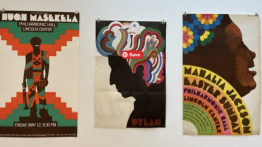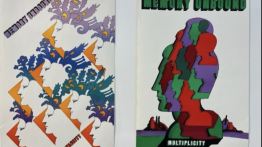Generous Donation of Milton Glaser Work Comes to Lubalin Center
POSTED ON: June 27, 2023
This spring, The Herb Lubalin Study Center of Design and Typography received approximately 400 works by Milton Glaser, the influential graphic designer known for his outstanding contributions to the field of design and 1951 School of Art graduate. Mirko Ilić, a graphic designer, illustrator, and long-time associate of Glaser’s, pledged this significant gift to Cooper about two years ago as part of his ongoing work to keep Glaser’s work alive in the public memory and to demonstrate how the designer’s influence was truly extraordinary and far-reaching.
Of course, so much of Glaser’s work is imprinted on the collective brain—New York magazine’s logo, Bob Dylan’s psychedelic profile, I heart NY. But Ilić, along with design critic Steven Heller and Glaser archivist Beth Kleber—all three deeply familiar with Glaser’s work beyond the best hits—published a book this year that featured many hundreds of examples of Glaser’s designs that have gone unseen since their initial publication. Entitled Milton Glaser: POP, the book includes more than 1,100 images from the 1960s and ‘70s.
In a group interview with Print magazine, Ilic pointed out that Glaser himself had little interest in reviewing his work from that period "because once he left the Beatles—Pushpin—he didn't want to play those songs anymore." Nonetheless, the work remains fascinating to designers and researchers both for understanding Glaser's process and for putting his best-known work in a greater context. Kleber said of that era of Glaser's career, "It was not something he continued to show or talk about or explore beyond a few pieces, so it didn’t turn up in books or exhibitions, so there was this incredible wellspring of work that was basically unseen or had not been seen its original publication.”
Many of those—from album covers to stationery to music posters—are now part of the Lubalin Center’s collection. They’re also featured in ❤️ Milton, an exhibition running until July 15 in the 41 Cooper Gallery.







